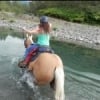Search the Community
Showing results for 'revision'.
Found 17,501 results
-
Very interesting Florinda - and chin up darlin, keep fighting the good fight - you are doing what you need to do to take good care of yourself. The SWANK plan sounds like anything but - it sounds terrible. Makes me think of one of my clients when I lived in NYC who went on a raw macrobiotic diet to help combat Lyme disease and she just started looking like death warmed over - like she had been drained of blood - then another client came waltzing in how had been doing Atkins for the first time looking fit as a fiddle, rosy cheeked - and quite slim. I found a doc closer to us who looks like he has significant experience with revision - I think I might see if I can attend one of his seminars to ask about the gerd issues and a RNY - I am scared of having to get a manometry (hubby had to have it and said it was the worst experience of his life - its where they thread sensors through your nose down your esophagus to place sensors for overnight study, his desciption of it is terrifying and hubby is no puss by a long shot lol) though I am more scared of Barretts esophagus!
-
Sarah, I'm so pleased you are feeling nearly back to normal and that you are pleased with your results... you are right... you haven't finished yet, thing will continue to improve. And good for you getting back to exercise, take your time and listen to you body. The more I read about the weight of the skin removed the more I think my surgeon was a bit conservative which is why I stil have this 'lip' - as I look down on it, it looks like a mini apron; same shape as before only much smaller. I have decided that I defo want a revision but this time with lipo, so I need to start some serious saving! Don't get me wrong, I am thrilled with my results and it has given me a new look on my physical self, but now I am looking at it in a more cosmetic way. Can't wait to see your pics!
-
Its been a long time since I have checked in - as usual Looks like there havent been a lot of folks responding lately on this thread but thought I would give you guys an update. As it turns out I have been having some ongoing problems that will require som more surgery. I have always had terrible gerd prior to and it seemed to get worse after the sugery. My lucky husband had his resolve completely after his vsg and hernia repair. I started seeing another bariatric doc last year, as my doc had moved to another practice and we moved as well. To make a very long story shorter - and the number of tests I've had done dwarf the first surgery - I will be having revision surgery on 11/22/16 - 11 days from now. I have a significant hiatal hernia, a stricture, and various other sundry things that will be repaired - gallbladder out and removal of stray sutures (which is goofy but that's what the photos after the last egd) My new surgeon is going to revise my sleeve a traditional Duodenal Switch. I had gained back about 30 lbs from my lowest weight. And it took just about a year to recover from the total knee replacement - what a nightmare that is, but at least I can walk again. Hopefully the hips and back wont hurt as much soon. Wishing everyone well and hope everyone is happy and healthy
-


How was your 5:2 day today?
CowgirlJane replied to Oregondaisy's topic in Gastric Sleeve Surgery Forums
Swizz I have shared some of my challenges and my number one advice is to get your sleep under control. It you can do that at least you can begin to tackle the rest of the madness. Let me know if you want to talk more. Lack of sleep was at least half my problem. The other half seems to be a lifetime of numbed feelings showing up all at once. Denise why would revisions show up with problems 3-4 years later? I thought the risks were closer to the surgery. Why would Aceves have done it "wrong" versus many other revision docs? Do you think that revisions dont get a normal shaped sleeve? I lose massive hair all the time and I still have a ton...always been that way....but why would it be caused by fasting. Don't worry about the scale if your fitted non stretch clothes fit the same, you are fine. My pants keep falling down so I may need to go jeans shopping this weekend. I am thinking about buying a decent swimsuit too although I am not much of a swimmer as the water is too cold. Sarsar, wishing your hubs best of luck on the surgery and recovery. Florinda I assume you don't have regular internet right now....but thinking of you! -
Hello! Sorry I've been away - been uber busy and I've been feeling a little down - the job I applied for was a no go... didn't get to the interview stage, which I was really gutted about as I would of like the experience. But I'm ok with it now... just gotta plod along and keep looking. I've picked myself up and dusted myself down and feel more positive again. At the end of term I took a coach/bus load of kids to Paris. The guy who originally organised it couldn't do it so they asked me to lead it... I was nervous of the responsibility but we had a great time and no dramas.The kids loved it, all 46 of them, and the other members of staff were really cool and did as I asked! Happy days. It was mine and my daughter's birthday yesterday... we had a great day. I have sorta resigned myself to the fact that it is her day now and go with the flow, so I spent the day running around after 11 teenagers... it was like being in work! lol. We had a BBQ for them and they all enjoyed themselves. Each went home with happy smiley faces! When the guests had gone, we say outside around the fire pit and drank tea - Betty had a can of Fosters...lol... apparently that is what 16yr olds do...lol. When I get chance I will post some pics - they are on my phone now and I want to put them on the puter. On the 5:2 front, I've been doing really well... not good in Paris and I did some damage limitation at the BBQ yesterday, but previously I've been getting in two really good fast days. Steve is still doing it with me and has got to a new low for him... jammy bugger... I have managed to get down to the top end of my bounce range again, but can't break the set point. I haven't been exercising over the last 3 weeks as I've been so busy, run down and have a lingering cold. Now we are off for another week (although I do have to go into work for two revision sessions) I will try to get to Curves a few times. I hope everyone is dealing with the major things that are going on... I wish I had words of wisdom but I don't... unfortunately. Oh and Cathy... I LOVE Banksy - I have a decal of the girl with the balloon in my kitchen! I would love to see that piece of graffiti art in Cheltnam! And as for the shape thing - I think I am back to my original pear shape that I was when I was a youngster! From looking at pics I would say my excess weight is lower body (not including my arms and the skin on them...grrr!)
-


banded, banding, bands--verb--To assemble or unite in a group
shadst8 replied to LeighaMason's topic in POST-Operation Weight Loss Surgery Q&A
Just checking in--you all know my crazy life. Insurance was giving my doctor such a hard time for port revision surgery, so he is going to use some machine to flip it manually? The surgery will be right in his office--it is scheduled for September 28. I am trying to research so I ask the right questions--will need to post a thread to see if anyone has ever heard of this?:smile::biggrin: -


Let's Get The Duodenal Switch People Together
purplefussia85 replied to Elisabethsew's topic in Duodenal Switch Surgery Forum
Unfortunately, i did not lose much weight as anticipated. The day of surgery i was 335 and my lowest was 260. That's with adhering to the diet given (low fat, low carb) and moderate exercise. My weight fluctuated for years and i met Dr. Roslin at a seminar where we talked revision options. I can't say i have any comorbidilities that prompted the 'need' for a revision, i just wanted the best tool to help fight this battle of the bulge Sent from my LM-Q710(FGN) using BariatricPal mobile app -


Let's Get The Duodenal Switch People Together
TexasFire replied to Elisabethsew's topic in Duodenal Switch Surgery Forum
I know NOTHING of the DS, and your post intrigues me. I am looking into revising to the sleeve, and now want to know why you say this quote above? I will go educate myself as best I can, but would be appreciative of any information or links that you might be able to provide! -
Hi my name is Kim. Had revision surgery band to gastric on August 16, 2013. Feeling GREAT!
-
Hi Kelly and kpardisek. I was scared also so that's why I did lapband. Was going to do the sleeve for the revision but the dietician I was working with talked to me about gbp. Boy am I glad we talked, best decision.
-


October Sleevers - Who else
livelyterry replied to clefofcividale's topic in Gastric Sleeve Surgery Forums
Hoping for end of Sept/1st of October in Mexico with Dr. Alvarez. I'm a band to sleever revision.... -


Summer 2018 Surgery Buddies: POST-OP Discussion
ellie123 replied to Ylime's topic in POST-Operation Weight Loss Surgery Q&A
My Dear Bari Brothers and Sisters, You may have noticed that I too have been missing from the Scene for a while. Not for lack of love for you all. Following my honeymoon of no work, I had to go back and as you may know a grueling international travel schedule followed. An as exciting and glamorous as going to places like France and England may sound, it does take it’s toll, and has been so tough for me to resist the endless temptations along the way, not to mention the drag on my noon existent time. And since I work with computers, when I fly home, I usually go dark and stay away from electronics, as my 6 and 8 year old miss me and I want to spend every spare moment with them. To add to that, we have all been severely debilitated by a series of illnesses. My daughter had Coxsackie Virus, My son had stomach Flu, I tested postive for Strep and then the bugs started to cross pollinate so we all suffered greatly with a bouquet of bugs Then of course the Holidays were upon us and...yeah, we had to get our act together and travel to family etc, so I have been go to GO, and all those things I put on hold while I had and recovered from Surgery, well they all caught up with me. From a weight perspective I really don’t know how I’m doing :\. And here is why: Pre- Surgery Weight 271, Surgery Day August 22nd 2018 257, current weight 226 So Weight loss since Surgery (approx 3 months ago is 31lb and total loss is 45. Not monumental like some, but then again, this is my 2nd revision, I had band to Sleeve to this so like when I had the Sleeve, at the 3 month mark I had lost on 15 more lb than I have now :(. I’ve lost enough to be able to feel better and have several non scale victories...not ashamed to take pics with kids, easier fit in airplane seats, more energy, feel better about myself, my cloths are fitting great, more optimistic about the future, did not feel such dread going to see family on Thanksgiving, etc On my trips, where I have had hotels with kitchenettes, I’ve avoided eating out all together, doing fabulously grocery shopping, walking min 10K steps a a day and loosing weight. When I travel and there is no fridge or kitchen in the hotel, its much harder. An unlimited food budget coupled with crazy irresistible deliciousness makes it tough tough TOUGH to resist. In my last trip to France, various cheeses, and even Breads found their way into my world. Nothing near the copious previous quantities but enough to make me uncomfortable emotionally. The crazy part is my pouch did not resist at all. Very scary, as one with multiple surgeries I am crippled with the fear that this shall fail too. Which brings me to my next point. Following my stricture release a month ago, I no longer throw up, a good thing you might say BUT, I also seem to have lost my restriction!!!!! I mean, I don’t know where and HOW I am able to put away what I do :(((((((. Beyond sad and bewildered. Another problem is that my bloodwork revealed that my Anemia was worse...so on the 16th of Nov, I went in for an Iron Infusion. Now I had that last year with my Sleeve and I had a series of Iron infusions...7 in total 3 weeks apart and I left each infusion RAVENOUS and stayed that way. Gaining tons of weight before each next one. Well this time seems no different in that I am RAVANOUS ALL THE TIME, since I got it over a week ago. That coupled with the seeming loss of restriction is desasterous. I’m snacking on crackers and nuts and I know that stuff adds up. Last night I did a test to see when I will get full. Tried eating what would normally be considered healthy ways to fill yourself. Removed my Vegan restrictions and had at least 5 strips of deli roast beef...not full, a cup of leftover Green Bean casserole...than a big cup of chicken tortilla soup...nada...a big bowl of Green Beans, Brussel Sprouts and curried chickpeas followed....and 30mins later I was in a grazing mood again, grabbing Oat Crackers covered with no sugar chocolate and chia seeds...and guys...yeah, not a peak from my pouch and somehow I never got to a full or satiated feeling. Too depressed to even call doc about it. What can they do? I’m just 3 m out, this has GOT to work for me, and I’m like if at 3 months I’m able to devour all that...what hope is there at a year or two. Been down this road too many times. Trying hard not to be depressed...I gave up my Wellbutrin on Surgery day and have been doing great, but this...food preoccupation and seeming return of hunger plus lack of restriction has got me seriously in a funk. So for those suffering from too much restriction, I repeat, relish it..it does NOT last! This coming from me who was throwing up at a sip of water and now just 3 short months latter, I’m like praying for restriction. Frustrating does not begin to cover it...I just don’t know what to do. It’s also the week before my period when I’m usually most carb needy, so that is probably playing in too....idk, any thoughts? So yeah...here is where i find myself. About to go walking, it’s cold but I’ll brave it, if for nothing else, than to increase my Serotonin naturally (and catch up on my work calls as I do). And that’s what’s up with ellie123. Hope you all had an awesome thanksgiving, miss you all and hope everyone is doing great. -
Wow! One month of liquid diet?! You can do it!!! Are you able to incorporate greek yogurt during this time? It was a life-saver for me during my liquid diet prior to my gastric sleeve surgery. I’m scheduled for a revision to RNY on August 8th so I start my liquid diet on Monday July 25th. I see my nutritionist at the bariatric center this morning to go over dietary requirements for RNY. I’m not nervous about the surgery since I’ve already had one bariatric procedure and did just fine. I just remember struggling some during the liquid diet. It can be tough but will be sooo worth it! 😁👍🏻
-
It's been a bit busy lately with fair season here trying to maintain the goats, get them ready for shows, judging, etc. Add in that a friend had to move so tried to help with that and I'm still struggling with finding a decent mask for the CPAP machine and I just haven't had lots of online time. I got down to 205 but am now holding at 215. First goal was 225 and then revised to 210 but at 210, everyone thought I looked ill and 215 seems to be a bit healthier looking weight for me. I've held there for about 3 weeks with absolutely no fill so that's encouraging. Still have bad food days where things get stuck but, for the most part, I'm able to eat reasonable foods without difficulty. Ice cream is still my downfall so I try not to keep it in the house. If I go running around, I'll sometimes stop and get some. It's far more expensive that way but it keeps me a bit under control. My other stumbling block has been fudge. I've been making goat's milk fudge and have become rather proficient at it and have some interesting flavors. (A couple of friends are encouraging me to explore the options on selling the fudge.) Of course, I have to sample what I make! <G> I've also made some chevre (goat cheese) and some goat's milk ice cream but those products can't be sold in Ohio without getting licensure. Fudge has to be cooked to such a high temperature, there's more flexibility there. And, as if I didn't have enough going on, after wanting a miniature donkey for years, this past week, I now have two, Mary and Feller. A friend has one she's trying to find a home for so I may end up with three but if that happens, will probably find Feller a new home. And I may be getting a fourth dog. Before I got my first Aussie (who is almost 6 now), I really wanted a Cavalier King Charles Spaniel. I came across one that may get to live with me. Don't need it but I've decided that I need to do things for me and I want it. And I'm getting very spoiled. My mother and 86 year old grandmother come out at least weekly, when I'm not going to be home, and clean my house, do my laundry, dishes, etc. It's like having the good parts of a wife but not having to put up with one. <G> (Ducking now!) My mom hasn't been out since the donkeys came, and I didn't tell her so it will be interesting to hear her reaction. She likes animals (has 3 dogs, a rabbit and a couple of birds) but doesn't understand why I want so many. She already complains about how much dog hair my house has so I can just imagine her reaction if I get another dog. (She does know, though, I really want a Cavalier. My brother's fiance got one and I was jealous so she asked them if there were others available.) Off to milk. Hope everyone is having a good summer. I'll check in now and then. Tom
-
I'm in the same boat. I will have my band and revision to the sleeve at the same time hopefully, but I've been unfilled for a while and have gained a lot of weight back. I was successful as well with the band, but I'm also wondering if the sleeve will be enough. I've considered bypass, but I just really don't think I am ready to go there. I just dont' want to find myself in this same boat again in 4-5 years. I already swore I'd never be here again when I lost with the band, yet here I am. :-( I have to have an EGD on 1/4/12 and then can schedule my surgery. I'm hoping for the middle to end of January. I'm just ready to get started again for real. Good luck!
-


May sleevers results so far!
mgmccleary replied to lexi6510's topic in Gastric Sleeve Surgery Forums
Revision to sleeve May 21st SW 244 CW 219.5 Good job everyone!!! -
You are not alone! I fear that tremendously. I am having revision surgery, which means I’ve been here before (or something like this) and I lost over 130 lbs from my highest weight and have gained a ton of it back. Now my gain was pretty much due to the pandemic/getting COVID but I gained it none-the-less. I will say I personally am preparing for this surgery in a way I never could the first time around. These many resources did not exist when I got my lapband. But I joined this app/group for support and if we’re not supporting each other even through our worries and fears how supportive are we really being? So know you’re not alone or being overly negative, you can’t work through your fears if you don’t acknowledge them! And, you can make this work, it’s possible. And I believe it will happen for me, so there’s no reason for you to not believe it will happen for you. There’s nothing particularly special about those who succeed beyond their determination to use their tool and make themselves succeed.
-


January 2013 Sleevers?
CheLss182 replied to LenaVSG's topic in PRE-Operation Weight Loss Surgery Q&A
Ahhhh just scheduled my surgery ... January 9th (band to sleeve revision) -


January 2013 Sleevers?
CheLss182 replied to LenaVSG's topic in PRE-Operation Weight Loss Surgery Q&A
I'm 24 and having my revision on January 9th ... I have the lap band now which I've had since 21 ... I'm scared too!! -
I don't have my surgery date set yet, but come cash or high water, I'm doing it. I'm revising from the band. I have to have an EGD on 1/4/13 to see what kind of damage if any my band has done. Hoping the insurance will pay for the revision since they payed for the band, but not holding my breath. I'm so ready to do this!! So miserable and unhappy wih my weight. Good luck to all of you with early January dates!! Congrats!
-
I got the last two, Jgandg and msgoat. I'll have you revised on the next post.
-


The BIG Book on the Gastric Sleeve!
Oregondaisy replied to Alex Brecher's topic in PRE-Operation Weight Loss Surgery Q&A
Alex, did you get a revision surgery? -
Perhaps discussing with your surgeon, different surgery types that might be available for revision if you are really not happy with the band and think that you won't be compliant with a replacement. Either way just leaving it there especially if it is not working or disconnected can't be a good thing, so follow up with your surgeon or find one that has more extensive support and see what options are out there. Don't just let it sit.
-


Gastric sleeve to gastric bypass revision
Titaniumsleeved2014 replied to msmreed47's topic in Revision Weight Loss Surgery Forums (NEW!)
Hi everyone, I was revised from sleeve to RNY March 16th due to complications and severe case of GERDS and sadly I'm really regretting I'd rather had kept suffering from previous complications... I have yet to eat anything that I can keep down.... Not to mention my weight loss is at a complete halt for over a month no matter how much I work out....and I'm completely disappointed in both of these surgeries and wish I never had surgery I'm still over 200lbs.... Sent from my LG-D850 using the BariatricPal App -


Gastric sleeve to gastric bypass revision
L. Knight replied to msmreed47's topic in Revision Weight Loss Surgery Forums (NEW!)
I go to MX July 13 for a revision, sleeve to MGB. I'm looking forward to it. I'm hoping to lose 30 pounds. Sent from my MotoE2(4G-LTE) using the BariatricPal App










